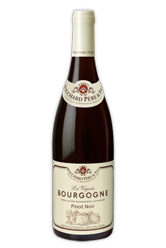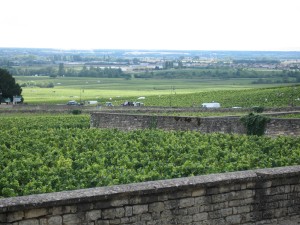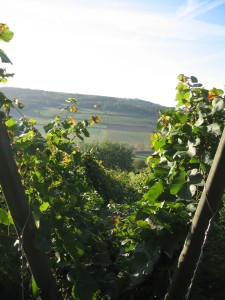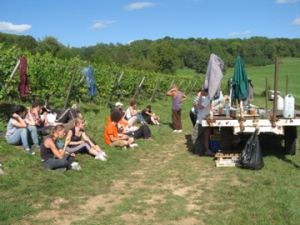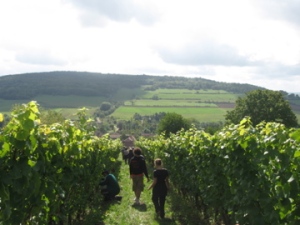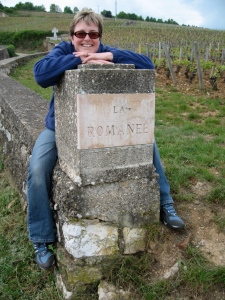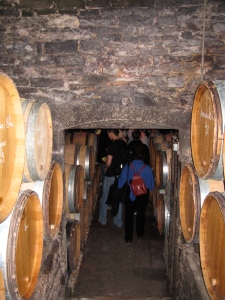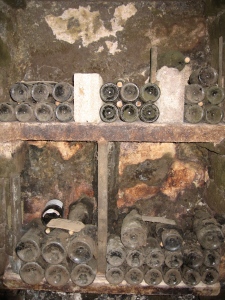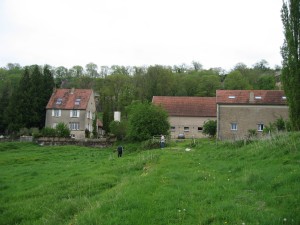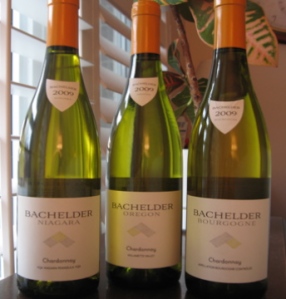 Thomas Bachelder, former winemaker of Le Clos Jordanne in Ontario’s Niagara Peninsula, has released a trio of Chardonnays from 3 different wine regions around the world – Burgundy, Oregon, and Niagara. Why were these areas chosen? Well, Niagara and Oregon have cooler climates similar to Burgundy, Chardonnay’s ancestral homeland, and since Bachelder wanted to showcase cool climate Chardonnay at its finest, these were logical choices.
Thomas Bachelder, former winemaker of Le Clos Jordanne in Ontario’s Niagara Peninsula, has released a trio of Chardonnays from 3 different wine regions around the world – Burgundy, Oregon, and Niagara. Why were these areas chosen? Well, Niagara and Oregon have cooler climates similar to Burgundy, Chardonnay’s ancestral homeland, and since Bachelder wanted to showcase cool climate Chardonnay at its finest, these were logical choices.
Thomas has lived and worked in all three of these regions at some point in his winemaking career. He does not own vineyards or wineries in these regions; he rents space in other wineries to craft these regional wines. Please click here to see Konrad Ejbich’s interview with Thomas Bachelder.
An Education in Terroir
This project is a true education in terroir. Although there is no direct English translation for this French term, “terroir” can be thought of, very simply, as the whole natural environment of a vineyard site. It refers to the soil, topography, climate, and even grape varieties and viticultural practices. The various types and combinations of each of these factors is unique to each site and is believed to contribute to the flavours, aromas, and style of the wine. The terroir of a particular place cannot be replicated elsewhere.
Winemaking
Bachelder made each wine exactly the same way in order to illustrate the unique terroir of each region – the only thing different is the ground the grapes were grown in. The grapes are not from one specific vineyard, but were sourced from a number of good vineyards in each region, organic wherever possible. Wild yeasts were used for fermentation and then the wines were aged for 16 months in older oak barrels. The oak is subtle and integrated and does not overpower the natural aromas and flavours of the Chardonnay grape.
All three wines were released at Vintages at the LCBO on Saturday, February 18, but the Oregon wine was pulled off the shelves temporarily. Read “Tartrates in Wine – Bachelder Oregon Chardonnay” to find out why. I didn’t open the wines until I was able to open all three of them together and could taste them side by side.
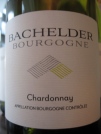 Bachelder Bourgogne Chardonnay 2009: A bit tight with delicate aromas of lemon/lime citrus, yellow apple, white blossoms, wet stone, and a chalky, steely character. The rather austere minerality follows through onto the palate where there is a zippy acidity and a long length. This is the most austere and flinty of the three Chardonnays (definitely Old World in style), but no less delicious. I think this is my favourite of the three. A great food wine.
Bachelder Bourgogne Chardonnay 2009: A bit tight with delicate aromas of lemon/lime citrus, yellow apple, white blossoms, wet stone, and a chalky, steely character. The rather austere minerality follows through onto the palate where there is a zippy acidity and a long length. This is the most austere and flinty of the three Chardonnays (definitely Old World in style), but no less delicious. I think this is my favourite of the three. A great food wine.
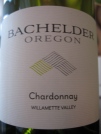 Bachelder Oregon Chardonnay 2009: Sweet, ripe fruit aromas of pineapple, peach, and citrus, with vanilla, minerals, and a very slight nutty note. Rich and creamy on the palate with notes of sweet vanilla, caramel, and ripe yellow fruit, and a long length. A style for those who like a rounder, creamier texture in their white wines. This is certainly more of a New World style, but it still retains the tension typical of cool climate Chardonnay, with a slight tartness on the finish. While it’s very different from the Bourgogne Chardonnay, it’s without question a very pleasurable wine.
Bachelder Oregon Chardonnay 2009: Sweet, ripe fruit aromas of pineapple, peach, and citrus, with vanilla, minerals, and a very slight nutty note. Rich and creamy on the palate with notes of sweet vanilla, caramel, and ripe yellow fruit, and a long length. A style for those who like a rounder, creamier texture in their white wines. This is certainly more of a New World style, but it still retains the tension typical of cool climate Chardonnay, with a slight tartness on the finish. While it’s very different from the Bourgogne Chardonnay, it’s without question a very pleasurable wine.
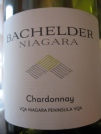 Bachelder Niagara Chardonnay 2009: Stylistically, this Chardonnay lies somewhere between the Burgundy and Oregon examples. It has the both the acidity and minerality of the Chardonnay from Burgundy, as well as some of the fruit flavours of the wine from Oregon. This wine is full of citrus, tree fruit, wet stone, and spice aromas. I also found a touch of smokiness – not sure if that’s the limestone soils the grapes grow in or the judicious use of oak. This wine has a firm structure and a long length. Very delicious.
Bachelder Niagara Chardonnay 2009: Stylistically, this Chardonnay lies somewhere between the Burgundy and Oregon examples. It has the both the acidity and minerality of the Chardonnay from Burgundy, as well as some of the fruit flavours of the wine from Oregon. This wine is full of citrus, tree fruit, wet stone, and spice aromas. I also found a touch of smokiness – not sure if that’s the limestone soils the grapes grow in or the judicious use of oak. This wine has a firm structure and a long length. Very delicious.
All three of these wines are worth the $34.95 price tag at the LCBO. If you can splurge a bit or have some wine-loving friends coming over, then I recommend you buy all three and taste them together to really get a feel for the unique terroir of each region.
